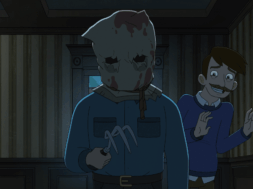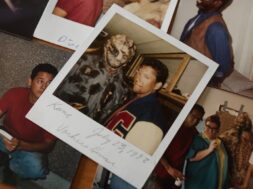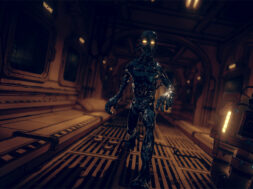With horror industry heavy hitters already in place from the 1970s, the 1980s built upon that with the rise of brilliant minds in makeup and effects artists, as well as advances in technology. Artists like Rick Baker, Rob Bottin, Alec Gillis, Tom Woodruff Jr., Tom Savini, Stan Winston, and countless other artists that delivered groundbreaking, mind-blowing practical effects that ushered in the pre-CGI Golden Age of Cinema. Which meant a glorious glut of creatures in horror. More than just a technical marvel, the creatures on display in ‘80s horror meant tangible texture that still holds up decades later. Grotesque slimy skin to brutal transformation sequences, there wasn’t anything the artists couldn’t create. It Came From the ‘80s is a series that will pay homage to the monstrous, deadly, and often slimy creatures that made the ‘80s such a fantastic decade in horror.
Four years after the Freeling family fled their Cuesta Verde home, their story continued in the follow-up sequel Poltergeist II: The Other Side. Released theatrically on May 23, 1986, the Freelings relocated to Phoenix, Arizona, and the site of their former home was turned into an archaeological dig site. Enter Native American shaman Taylor (Will Sampson), who discovers hostile spirit Kane has escaped the cave to reclaim Carol Anne.
It’s this sequel that transitions the paranormal activity from the house and transfers it directly to the central characters of the original trilogy, young Carol Anne Freeling (Heather O’Rourke) and Reverend Henry Kane. Though the sequel was financially successful, it wasn’t nearly as successful as its predecessor in both box office gross and critical reception. The mythology behind the original poltergeist haunting takes a sharp turn into the realm of mystical in the sequel, further separating it from the original film. Whether you’re a fan of the more spiritual leanings or not, the sequel does nail its villain. In human form, Reverend Henry Kane is downright creepy, amplified by Julian Beck’s performance.
But when Steven Freeling (Craig T. Nelson) refuses Kane’s entrance back into Carol Anne’s life in human form, the sequel gets really weird. Kane possesses a Mezcal worm while Steven is getting drunk, which then possessed Steven. He then vomits out a Kane monster, that in turn grows into a tentacled monster. The final showdown between good and evil exists on another plane of existence, the Other Side, with Kane now a massive monstrosity still trying to run away with Carol Anne while Taylor and Steven fight it in the spiritual realm.
It was the visual and creature effects behind the various iterations of the Kane beast that earned the team, namely Richard Edlund, John Bruno, Garry Waller, and William Neil, a nomination for best visual effects at the 1987 Academy Awards (they lost to Aliens). Edlund had founded the visual effects company Boss Film Studios, the company hired to handle the film’s visual effects. It was a large crew involved with the production, and boasted artists like Screaming Mad George (Society).

Despite the acclaim and Oscar nod, there was one notable person unhappy with the final cut of the film in terms of creature effects; surrealist artist H.R. Giger. Giger was hired as a concept artist for the iterations of Kane’s monstrous form, but he wasn’t able to be present to oversee its creation. Additionally, director Brian Gibson didn’t really have any prior experience working with visual effects like this, which meant a lot of improvisation and adjustments that needed to be made during the shoot. By the time Giger did make it out to set, it was too late to make any changes. While his designs for the vomit monster and great beast did make it into the final film, he didn’t feel they really resembled his work.
Regardless, the team earned that nomination; the visual and creature effects made Poltergeist II: The Other Side memorable. Even if you don’t recall much about the sequel, you still likely remember the scene in which Nelson’s character vomits up a monster with vivid detail. It’s amazing. The Reverend Henry Kane is one of horror’s most unsung villains, and both Beck’s performance and the roster of talented artists from Boss Film Studios solidified his ranking.










